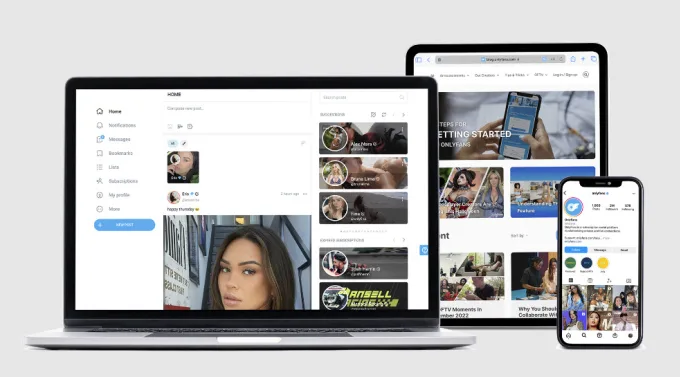Creating a subscription-based content platform like OnlyFans offers unique opportunities in the digital content space. This article outlines the essential steps for OnlyFans clone app development, guiding you through everything from technical requirements to marketing strategies.
Step 1: Define Your Niche
Identify your target audience. Research different niches, such as fitness, art, cooking, or adult content. Pinpoint what type of content users desire and how you can differentiate your platform. This focus helps in building a community and attracting content creators who resonate with your vision.
Step 2: Conduct Market Research
Analyze competitors and their business models. Understand what works and what doesn’t. Look into pricing strategies, promotional tactics, and user feedback. This insight allows you to make informed decisions, improving your platform’s features and user experience.
Step 3: Plan Your Features
Create a list of core features for your platform. Essential elements include:
- User Registration: Simplify the sign-up process to enhance user experience.
- Subscription Management: Allow users to easily manage subscriptions, including payments and cancellations.
- Content Upload: Provide tools for creators to upload various content types like videos, photos, and live streams.
- Messaging System: Facilitate communication between creators and subscribers through direct messaging.
- Payment Gateway Integration: Choose reliable payment processors that support recurring payments, ensuring smooth transactions.
Step 4: Choose the Right Technology Stack
Select the appropriate technology stack to build your platform. Consider using:
- Front-End Technologies: HTML, CSS, and JavaScript frameworks (like React or Angular) create an engaging user interface.
- Back-End Technologies: Choose frameworks such as Node.js or Django for robust server-side processing.
- Database Management: Use MySQL or MongoDB for effective data handling and storage.
These choices influence the platform’s performance, scalability, and security.
Step 5: Develop the Platform
Start building your platform. If you lack technical skills, consider hiring mobile app developers or outsourcing the project. Ensure that the development process follows best practices, including:
- Agile Methodology: This approach helps in managing tasks effectively, allowing for adjustments based on user feedback.
- Regular Testing: Conduct usability tests to identify bugs and improve user experience before the official launch.
Step 6: Focus on Security
Security plays a crucial role in user trust. Implement the following security measures:
- Data Encryption: Protect user data during transmission and storage.
- Two-Factor Authentication: Add an extra layer of security for user accounts.
- Regular Audits: Conduct security audits to identify and resolve vulnerabilities.
These steps minimize the risk of data breaches and instill confidence in your users.
Step 7: Create a Marketing Strategy
Develop a marketing plan to attract both creators and subscribers. Utilize various channels to promote your platform:
- Social Media Marketing: Leverage platforms like Instagram, Twitter, and TikTok to reach your audience. Share engaging content and collaborate with influencers in your niche.
- Content Marketing: Create valuable content that showcases your platform’s benefits, driving traffic to your site.
- Email Campaigns: Build an email list to keep users informed about updates, promotions, and new creators.
Tailor your marketing strategies to resonate with your target audience, maximizing your reach and engagement.
Step 8: Launch Your Platform
Before launching, ensure everything runs smoothly. Conduct a soft launch with a limited audience to gather initial feedback. This phase allows you to identify and address potential issues before a broader rollout.
Once you’re confident in your platform’s functionality, launch it publicly. Use your marketing channels to promote the launch and attract initial users.
Step 9: Gather Feedback and Iterate
After the launch, continuously seek user feedback. Create surveys or encourage reviews to understand user satisfaction and areas for improvement. Regular updates and enhancements keep your platform fresh and engaging.
Adapting based on user input fosters loyalty and encourages word-of-mouth referrals, essential for growth.
Step 10: Implement Monetization Strategies
Establish diverse monetization options to maximize revenue. Consider the following methods:
- Subscription Tiers: Offer multiple subscription levels with varying benefits, allowing users to choose according to their needs.
- Pay-Per-View Content: Enable creators to charge for exclusive content, providing an additional revenue stream.
- Tips and Donations: Allow subscribers to support their favorite creators directly.
These strategies cater to different user preferences, enhancing overall profitability.
Step 11: Build a Community
Cultivate a strong community around your platform. Host events, such as Q&A sessions or live streams, to foster interaction between creators and subscribers. Encourage user-generated content to increase engagement and create a sense of belonging.
A vibrant community enhances user retention and attracts new subscribers.
Step 12: Monitor Analytics
Use analytics tools to track user behavior and platform performance. Monitor metrics like user engagement, subscription rates, and content popularity. This data provides valuable insights for future improvements and marketing strategies.
Regularly analyzing performance helps you make data-driven decisions, ensuring the platform remains competitive.
Step 13: Ensure Compliance with Legal Standards
Stay informed about legal regulations regarding online content and subscriptions. Implement age verification processes if your platform includes adult content. Understand copyright laws to protect both your platform and the creators using it.
Compliance safeguards your platform from legal issues, fostering a trustworthy environment for users.
Step 14: Scale Your Platform
As your platform grows, consider scaling up your operations. This expansion may involve enhancing server capacity, hiring additional staff, or adding new features based on user demand. Plan for growth to ensure your platform remains reliable and user-friendly.
Scaling strategically positions your platform for sustained success in a competitive market.
Conclusion
Creating an OnlyFans clone requires careful planning and execution. By defining your niche, conducting thorough research, and building a secure and user-friendly platform, you can attract both content creators and subscribers. Focus on marketing, community building, and compliance to ensure long-term success.
With the right approach, your subscription-based content platform can thrive in a dynamic digital landscape. Embracing the concept of OnlyFans clone app development paves the way for innovative content sharing and monetization opportunities.
